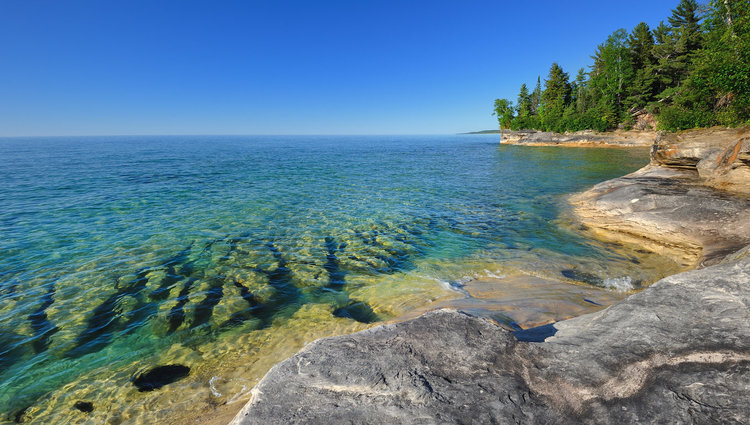GREAT LAKES RESTORATION INITIATIVE
The Great Lakes are a natural wonder of the world that holds one-fifth of the world’s fresh water supply. Comprising over 700 miles of New York’s shoreline, Lake Erie, Lake Ontario, and the St. Lawrence Seaway hold the key to our economic health, recreation, and irreplaceable family experiences. The Great Lakes supply millions of New Yorkers with their drinking water, provide habitat for wildlife, and support billion dollar industries such as tourism and fishing.
Threats to the Great Lakes Ecosystem
Despite progress to protect and restore the Great Lakes since the adoption of the Clean Water Act, the Great Lakes remain threatened by pollution, invasive species and habitat destruction. New York is dependent upon a healthy Great Lakes ecosystem, yet inaction continues and signs of decline are apparent. Problems associated with the Great Lakes include, but are not limited to:
Lake Erie, once a cleanup success story, is now experiencing depleted dissolved oxygen levels in late summer, creating a massive “dead zone” that cannot sustain life.
More than 185 aquatic invasive species have already entered the Great Lakes, causing serious economic and environmental problems. Asian carp, if allowed to enter the lakes, would decimate native fish species and the multi-billion dollar fishing industry.
In 1987, the US and Canada committed to restoring the toxic hot spots of the Great Lakes basin, known as Areas of Concern (AOCs). Toxic pollution persists in the Great Lakes; New York has issued a lake wide fish advisory consumption warning for several fish species due to PCB, Dioxin, and Mirex (an insecticide and flame retardant) contamination. Only one of the six AOCs listed in NYS has been de-listed.
Toxic algal outbreaks continue to foul drinking water, harm wildlife, hurt small businesses, and incur higher costs for utilities and people.
It is time to implement manageable solutions to these problems!
Great Lakes Restoration Initiative
The Great Lakes Restoration Initiative (GLRI) was launched in 2010 to accelerate efforts to protect and restore the lakes. To date, well over $3 billion has been invested in addressing the biggest threats facing the lakes, including cleaning up toxic hotspots, combating invasive species, protecting the lakes from polluted runoff, restoring wetlands, and more. Due to this continued investment, the GLRI is producing significant results for the Great Lakes ecosystem and economy in New York and throughout the Great Lakes region.
To guide restoration work now and in the years ahead, federal agencies have developed the GLRI Action Plan III, which summarizes the actions that federal agencies plan to implement through 2024. CCE and our partners will continue to advocate that Congress provide robust funding to ensure that the important goals established in the action plan are accomplished, which is essential to protecting and restoring the Great Lakes for current and future generations!
CCE is a member of the Healing Our WatersSM Great Lakes Coalition. Established in 2005, the coalition’s goal is to restore and protect the Great Lakes. Led by the National Wildlife Federation and the National Parks Conservation Association, the coalition represents millions of residents in the Great Lakes region. For more information, visit www.HealthyLakes.org.


